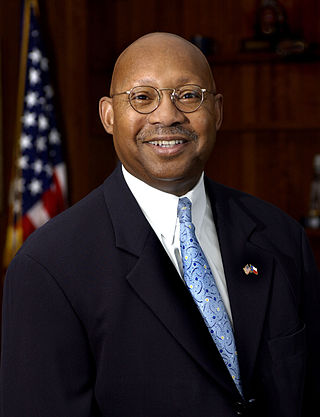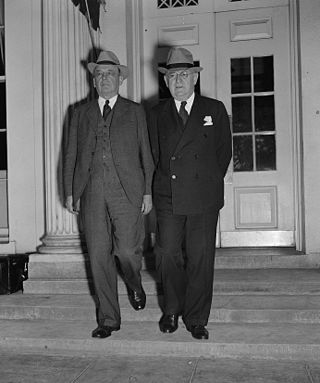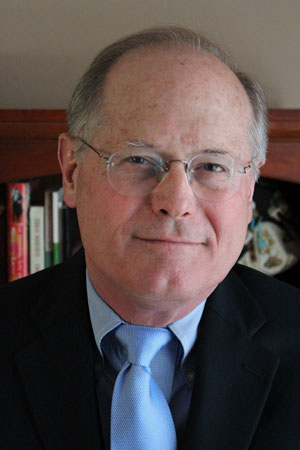Related Research Articles

The United States Department of Housing and Urban Development (HUD) is one of the executive departments of the U.S. federal government. It administers federal housing and urban development laws. It is headed by the secretary of housing and urban development, who reports directly to the president of the United States and is a member of the president's Cabinet.
The Community Development Block Grant (CDBG), one of the longest-running programs of the U.S. Department of Housing and Urban Development, funds local community development activities with the stated goal of providing affordable housing, anti-poverty programs, and infrastructure development. CDBG, like other block grant programs, differ from categorical grants, made for specific purposes, in that they are subject to less federal oversight and are largely used at the discretion of the state and local governments and their subgrantees.

Bill Clinton's tenure as the 42nd president of the United States began with his first inauguration on January 20, 1993, and ended on January 20, 2001. Clinton, a Democrat from Arkansas, took office following his victory over Republican incumbent president George H. W. Bush and independent businessman Ross Perot in the 1992 presidential election. Four years later, in the 1996 presidential election, he defeated Republican nominee Bob Dole and Perot again, to win re-election. Clinton was limited to two terms and was succeeded by Republican George W. Bush, who won the 2000 presidential election.
The merit system is the process of promoting and hiring government employees based on their ability to perform a job, rather than on their political connections. It is the opposite of the spoils system.

Alphonso R. Jackson served as the 13th United States Secretary of Housing and Urban Development (HUD). He was nominated by President George W. Bush on August 28, 2004, and confirmed by the Senate on August 31, 2004. Jackson announced his resignation on March 31, 2008.

Henry Gabriel Cisneros is an American politician and businessman. He served as the mayor of San Antonio, Texas, from 1981 to 1989, the second Latino mayor of a major American city and the city's first since 1842. A Democrat, Cisneros served as the 10th Secretary of Housing and Urban Development (HUD) in the administration of President Bill Clinton from 1993 to 1997. As HUD Secretary, Cisneros was credited with initiating the revitalization of many public housing developments and with formulating policies that contributed to achieving the nation's highest ever rate of home ownership. In his role as the President's chief representative to the cities, Cisneros personally worked in more than two hundred cities spread over all fifty states. Cisneros's decision to leave the HUD position and not serve a second term was overshadowed by controversy involving payments to his former mistress.

The President's Committee on Administrative Management, commonly known as the Brownlow Committee or Brownlow Commission, was a presidentially-commissioned panel of political science and public administration experts that in 1937 recommended sweeping changes to the executive branch of the United States government. The committee had three members: Louis Brownlow, Charles Merriam, and Luther Gulick. The staff work was managed by Joseph P. Harris, director of research for the committee.
The presidency of Ronald Reagan was marked by numerous scandals, resulting in the investigation, indictment or conviction of over 138 administration officials, the largest number for any president of the United States.
Patricia Wallace Ingraham is founding dean of the College of Community and Public Affairs at Binghamton University and a former Distinguished Professor of Public Administration at the Maxwell School, Syracuse University.

Steven C. Preston is the president and CEO of Goodwill Industries International. He formerly served as the 14th Secretary of the U.S. Department of Housing and Urban Development from 2008 to 2009 and the 22nd Administrator of the U.S. Small Business Administration from 2006 until his appointment as HUD Secretary. Before entering public service, Preston spent nearly 25 years in financial and operational leadership positions in the private sector.
Merit pay, merit increase or pay for performance, is performance-related pay, most frequently in the context of educational reform or government civil service reform. It provides bonuses for workers who perform their jobs effectively, according to easily measurable criteria. In the United States, policy makers are divided on whether merit pay should be offered to public school teachers, and other public employees, as is commonly the case in the United Kingdom.
The Hoover Commission, officially named the Commission on Organization of the Executive Branch of the Government, was a body appointed by President Harry S. Truman in 1947 to recommend administrative changes in the Federal Government of the United States. It took its nickname from former President Herbert Hoover, who was appointed by Truman to chair it.
Charles O. Rossotti is an American businessman, and former Commissioner of Internal Revenue.
The Private Sector Survey on Cost Control (PSSCC), commonly referred to as the Grace Commission, was an investigation requested by United States President Ronald Reagan, authorized in Executive Order 12369 on June 30, 1982. In doing so President Reagan used the now famous phrase, "Drain the swamp". The focus was on eliminating waste and inefficiency in the US Federal government. The head of the commission, businessman J. Peter Grace, asked the members of that commission to "Be bold and work like tireless bloodhounds, don't leave any stone unturned in your search to root out inefficiency."
Carolyn J. Lukensmeyer is an American activist who is a leader in the field of deliberative democracy, a public servant and social entrepreneur. She is Executive Director Emerita of The National Institute for Civil Discourse. In 1995, she founded AmericaSpeaks, a non-partisan non-profit organization that strengthens citizen voice in decision making. Carolyn was chief of staff to Governor Celeste of Ohio from 1986 to 1991. She was Consultant to the White House Chief of Staff for nine months during the Clinton years.

In the United States, subsidized housing is administered by federal, state and local agencies to provide subsidized rental assistance for low-income households. Public housing is priced much below the market rate, allowing people to live in more convenient locations rather than move away from the city in search of lower rents. In most federally-funded rental assistance programs, the tenants' monthly rent is set at 30% of their household income. Now increasingly provided in a variety of settings and formats, originally public housing in the U.S. consisted primarily of one or more concentrated blocks of low-rise and/or high-rise apartment buildings. These complexes are operated by state and local housing authorities which are authorized and funded by the United States Department of Housing and Urban Development (HUD). In 2020, there were one million public housing units. In 2022, about 5.2 million American households that received some form of federal rental assistance.
The Centro Nazionale per l'Informatica nella Pubblica Amministrazione or CNIPA was an Italian public body which operated at the Presidency of the Council of Ministers for the implementation of the policies of the Minister for Innovation and Technology, with technical autonomy, functional, administrative, accounting and financial and independence of mind. It was established by Legislative Decree 30 June 2003, n. 196 Art. 176 in place of the Authority for IT in Public Administration (AIPA), which retains its powers. It has also been assigned by the Legislative Decree of 5 December 2003, n. 343 tasks, functions and activities carried out by the Technical Centre for the Unified Network of Public Administration (RUPA), including financial resources and equipment, as well as human resources.
Mark D. Fabiani is an American political strategist, crisis management expert, former Deputy Mayor of Los Angeles and chief of staff to Mayor Tom Bradley, and former White House lawyer and spokesman. He is recognized for his work as special counsel to President Bill Clinton and legal spokesperson for the Clinton White House from 1994 through 1996, as well as for his work as head of communications for the Gore presidential campaign in 2000. He also served in senior positions at the Department of Housing and Urban Development and at the Department of Justice.
Affirmatively Furthering Fair Housing (AFFH) is a provision of the 1968 federal Fair Housing Act signed into law by President Lyndon B. Johnson. The law requires that "All executive departments and agencies shall administer their programs and activities relating to housing and urban development in a manner affirmatively to further the purposes of" the Fair Housing Act. The law also requires the Secretary of the United States Department of Housing and Urban Development (HUD) to administer all HUD programs in a manner that affirmatively furthers fair housing.

David Osborne is an American author and consultant. He is the author or co-author of seven books, one of which was a New York Times best seller. He served as a senior advisor to Vice President Gore in 1993, helping to lead an effort to reform the federal government. He is currently director of the Progressive Policy Institute's project on Reinventing America's Schools, and his first novel was published in 2017.
References
- ↑ "Reinvention Initiatives". clintonwhitehouse4.archives.gov. Retrieved 2023-01-19.
- 1 2 3 4 5 6 7 Kohn, James V. (21 January 1982). "The Cliza and Ucureña War: Syndical Violence and National Revolution in Bolivia". The Hispanic American Historical Review. 62 (4): 607–628. doi:10.2307/2514569. JSTOR 2514569.
- 1 2 3 4 5 6 Inside the Reinvention Machine by Donald Kettl and John J. DiIlio, Jr., Brookings Institution Press, 1995.
- 1 2 "The Best Kept Secrets In Government – Digest Version. Vice President Al Gore. National Performance Review, September 1996" (PDF).
- ↑ In September 1997, Gore reported that 2.8 million people left the welfare rolls between 1993 and 1997. 4 Federal Welfare-to-Work Commitments: a report to President Bill Clinton by Vice President Al Gore, June 1997.
- ↑ Winograd, Morley. "Getting Results Americans Care About." Public Manager 27.3 (1998): 17. Academic Search Premier. Web. 19 Mar. 2012.
- ↑ Stone, Bob (03/01/1998). "Creating `reinvention university.'". The Public Manager (Potomac, Md.) ISSN 1061-7639, 27 (1), p. 47.
- 1 2 "Brief History of the National Partnership for Reinventing Government". govinfo.library.unt.edu.
- 1 2 "Clinton Text: `Our Nation Needs a New Direction." Los Angeles Times (pre-1997 Fulltext): 20. ABI/INFORM Complete; Los Angeles Times; ProQuest Central; ProQuest Criminal Justice. Feb 18 1993. Web. 19 Mar. 2012
- ↑ Moe, Ronald C. (21 January 1994). "The "Reinventing Government" Exercise: Misinterpreting the Problem, Misjudging the Consequences". Public Administration Review. 54 (2): 111–122. doi:10.2307/976519. JSTOR 976519.
- ↑ 6. Al Gore. National Performance Review: The Vision Takes Hold. Government Publications Department, 1995. Print.
- ↑ "What is a Hammer?". govinfo.library.unt.edu.
- ↑ The myth of the $600 hammer
- 1 2 3 Galston, William A. and Geoffrey L Tibbetts. "Reinventing Federalism: The Clinton/Gore Program for a New Partnership Among the Federal, State, Local, and Tribal Governments." Publius 1994: 23–48. JSTOR. Web. 16 Apr. 2012.
- 1 2 3 Lenkowsky, Leslie and James L. Perry. "Reinventing Government: The Case of National Service" Public Administration Review Aug. 2000: 298–307. JSTOR. Web. 17 Apr. 2012.
- ↑ Hetzel, Otto J (1994). "Cutting HUD's red tape: the Gore report's national performance review". Journal of Housing.
- 1 2 3 4 Implementation of the National Performance Review's Recommendations. DIANE publishing. 1994.
- 1 2 Wilson, Isaiah. The Problem with Foreign Military Sales Reinvention. World Affairs; 2001.
- ↑ Walker, Dinah (July 1, 2016). "Trends in U.S. Military Spending". CFR. Council on Foreign Relations. Retrieved December 2, 2016.
- 1 2 3 4 Shiramizu, Singh, Sharilyn, Amarjit (October 2006). "Influence of the National Performance Review on Supervisors in Government Organizations". Leadership and Management in Engineering. 6 (4): 150–159. doi:10.1061/(asce)1532-6748(2006)6:4(150) – via Texas State University Database.
{{cite journal}}: CS1 maint: multiple names: authors list (link) - 1 2 3 4 Clark, Charles (April 23, 2013). "Reinventing Government – Two Decades Later". govexec. National Journal Group. Retrieved December 2, 2016.
- 1 2 3 4 Peterson, Eric C. The Impact of the National Performance Review and Other Forces on the Rights of an Informed Citizenry: A Case Study in Reinvention-Reforming Government Publishing. Government Information Quarterly, pp. 383–392. 1998.
- 1 2 Barr, Stephen. "Reinventing Government Is an Idea Whose Time Has Come—Again." The Washington Post 22 Oct. 2000. LexisNexis. Web. 16 Apr. 2012.
- 1 2 Moe, Ronald C. "The ‘Reinventing Government’ Exercise: Misinterpreting the Problem, Misjudging the Consequences" Public Administration Review Apr. 1994: 111–122. JSTOR. Web. 17 Apr. 2012.
- 1 2 Breul, Johnathon, and John Kamensky (2008). "Federal Government Reform: Lessons from Clinton's "Reinventing Government" and Bush's "Management Agenda" Initiatives". Public Administration Review. 68 (6): 1009–1026. doi:10.1111/j.1540-6210.2008.00950.x. S2CID 154760702.